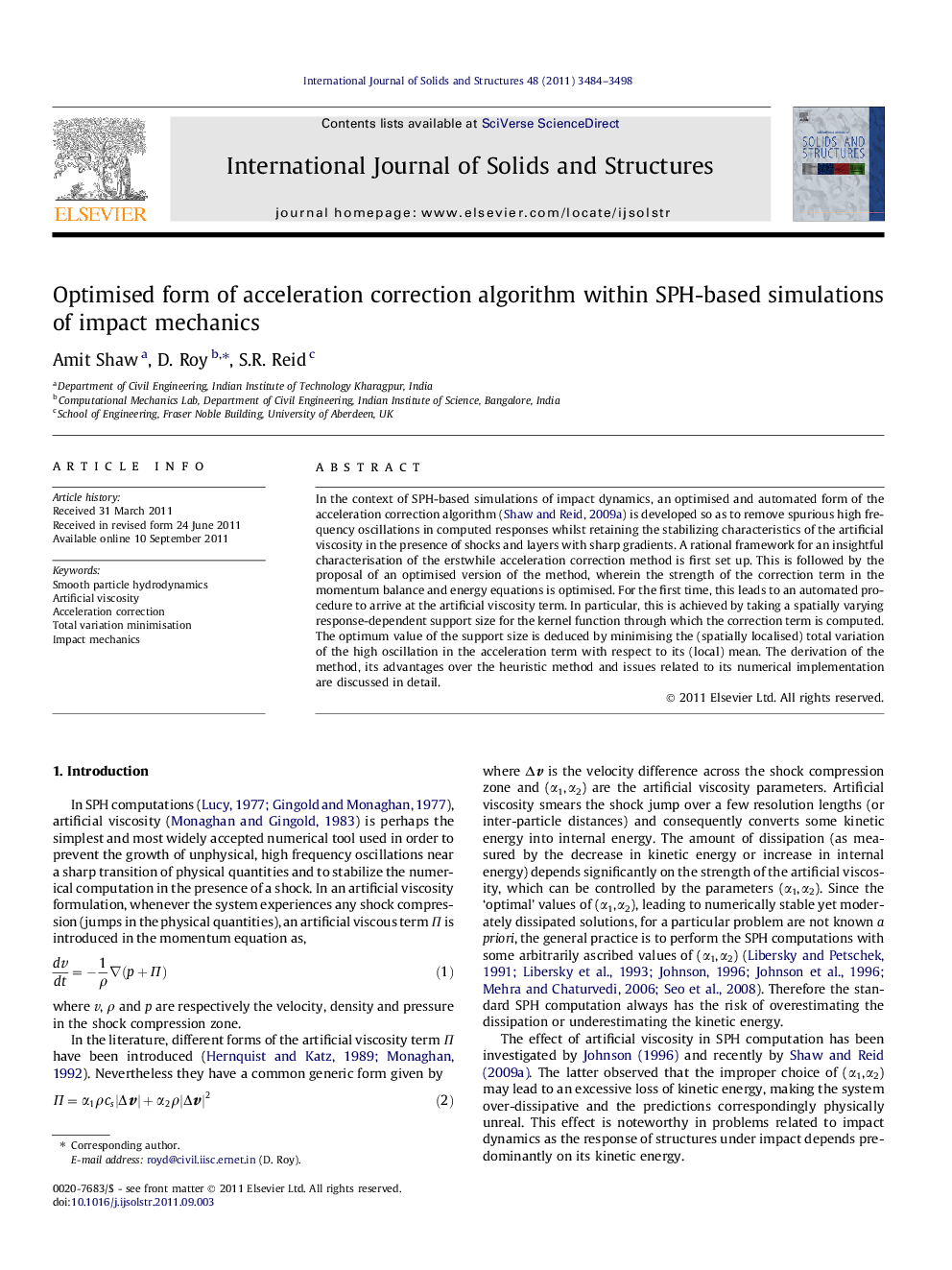| Article ID | Journal | Published Year | Pages | File Type |
|---|---|---|---|---|
| 278353 | International Journal of Solids and Structures | 2011 | 15 Pages |
In the context of SPH-based simulations of impact dynamics, an optimised and automated form of the acceleration correction algorithm (Shaw and Reid, 2009a) is developed so as to remove spurious high frequency oscillations in computed responses whilst retaining the stabilizing characteristics of the artificial viscosity in the presence of shocks and layers with sharp gradients. A rational framework for an insightful characterisation of the erstwhile acceleration correction method is first set up. This is followed by the proposal of an optimised version of the method, wherein the strength of the correction term in the momentum balance and energy equations is optimised. For the first time, this leads to an automated procedure to arrive at the artificial viscosity term. In particular, this is achieved by taking a spatially varying response-dependent support size for the kernel function through which the correction term is computed. The optimum value of the support size is deduced by minimising the (spatially localised) total variation of the high oscillation in the acceleration term with respect to its (local) mean. The derivation of the method, its advantages over the heuristic method and issues related to its numerical implementation are discussed in detail.
